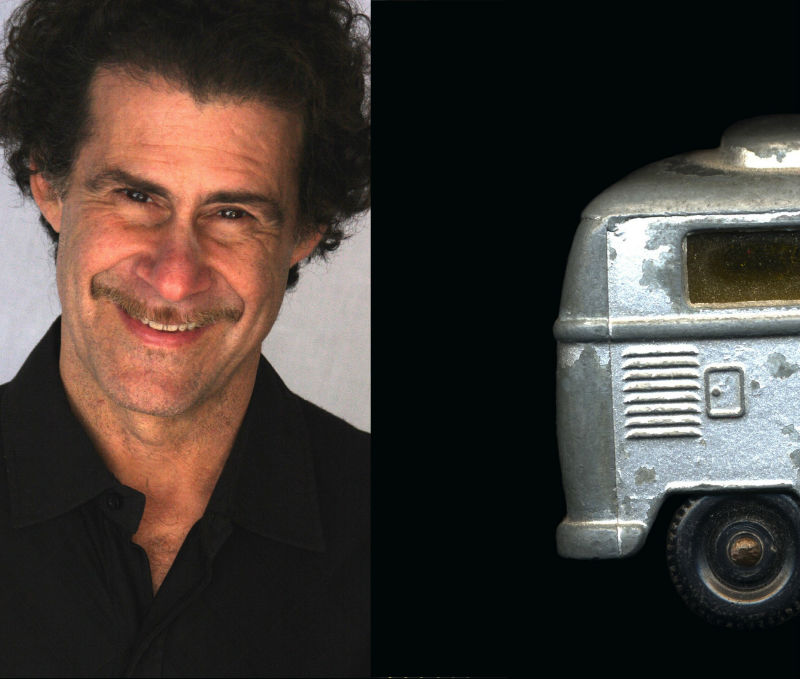Stimulation and Possibility: Dick Siegel's "Digital Manipulations" at Kerrytown Concert House

Local award-winning singer-songwriter Dick Siegel’s return to the visual arts has been a long time in coming. But having found his chosen medium, his return is both assured and insightful.
In a recent interview at the Kerrytown Concert House, Siegel said both the visual arts and music were passions that run through his family experience. But as his personal interest was in music -- and a reasonable one at that considering his award as Best New Folk Artist at the 1991 Kerrville Folk Festival and multiple Detroit Art Awards -- it was only until the turn of the millennium when working with a computer and scanner that his visual arts creativity began to take hold.
As Siegel says in his artist statement for this exhibit, “Through digital manipulation of color, shape, and image I enter a world of enormous visual stimulation and possibility. In this realm I discover things to construct that move me, amuse me, and amaze me. I then work to bring them into physical reality with their vividness and vitality intact."
This explanation is modest, to say the least. For Siegel’s work at Kerrytown is not merely a matter of locating imagery. Rather, the struggle to find this imagery is a painstaking procedure where the original objects upon which these digital manipulations are based come about only through a disciplined, repetitive amplification.
Siegel’s work is a thoroughly 21st-century digital adaptation of mid-20th-century surrealist automatism. This aesthetic -- largely identified with Andre Masson and Joan Miro; adapting Andre Breton’s literary writing -- is distinguished by the artist’s willingness to suppress conscious control of his or her artwork, relying instead on intuition to guide the artistic impulse.
As Siegel described his technique, “In the late 1990s, I began to play around with Adobe Photoshop. I worked to learn how to manipulate and develop this skill while also restricting myself from over relying on fixing color and adding effects. Instead, I sought to make things happen through the manipulation of the digital image at hand and using this information as raw material.”
This is analogous to the surrealists’ technique where representation is found through the accumulation of line or paint to paradoxically uncover latent images nestled in the original inspiration. The chief difference for Siegel lies in the power of his computer software to modify such first-order representation until he finds a more incisive delineation or abstraction to reflect his initial impression.
It’s a disciplined kind of art despite its seemingly haphazard method because the premise is based upon taming a kind of unpremeditated investigation. As such, not every starting point is going to yield a suitable conclusion.
“I’ll spend hours,” said Siegel, “searching for an image that catches my attention. And that’s only a start as I then need to begin what I call a ‘narrative’ through multiple digital approaches until the work becomes what it can be. It becomes a sometimes puzzling blend of inspiration and direction where I draw out the image as well as I can.”

One of Siegel’s earliest figurative works in this exhibit, Marvelous Mike, illustrates this principle. An initial scan of this robotic toy might have been dramatic enough. Yet through an enlarging of the original scan -- which, in turn, draws out subsidiary detail through expansion -- the off-center composition takes on a heightened effect that makes the work an increasingly interesting portrait.

By contrast, Siegel’s Into the Pink finds him locating form through color. This work is a microscopically digital Post-Painterly Abstraction whose chromaticity revels in a subtle tertiary color palette. This subtle balance allows the work to hover on its working surface. Like the best of such abstraction, “Into the Pink” is an artwork whose vibrancy fluctuates with the viewer’s distance to and from the composition.

Siegel’s Big Blue may well show us where his art is headed. This work has a variegated abstract background that’s a variation of Into the Pink’s chromatic working surface, yet the right-hand yellow corner of the work also braces the work’s title blue circle hanging off-balance in the foreground. Using primary colors to create an internal harmony against these waves of green on the left side of the work, Siegel’s hard-edged blue and red orbs fuse one kind of complex pattern against another.
This blending creates an internal dynamic whose tension locks two differing abstract approaches in a single artwork. And there’s no mistaking that Big Blue’s lack of balance animates the composition. Too fastidious a placement would give the work a stolidity that would compromise its internal tension. It may well be in this unconventionality that Siegel's future art will reside.
John Carlos Cantú has written on our community's visual arts in a number of different periodicals.
Kerrytown Concert House: “Dick Siegel, Digital Manipulations ” will run through March 29, 2017. The Kerrytown Concert House is located at 415 N. Fourth St. Exhibit hours 9:30 am to 5 pm, Monday-Friday. For information, call 734-769-2999 or visit kerrytownconcerthouse.com.


































